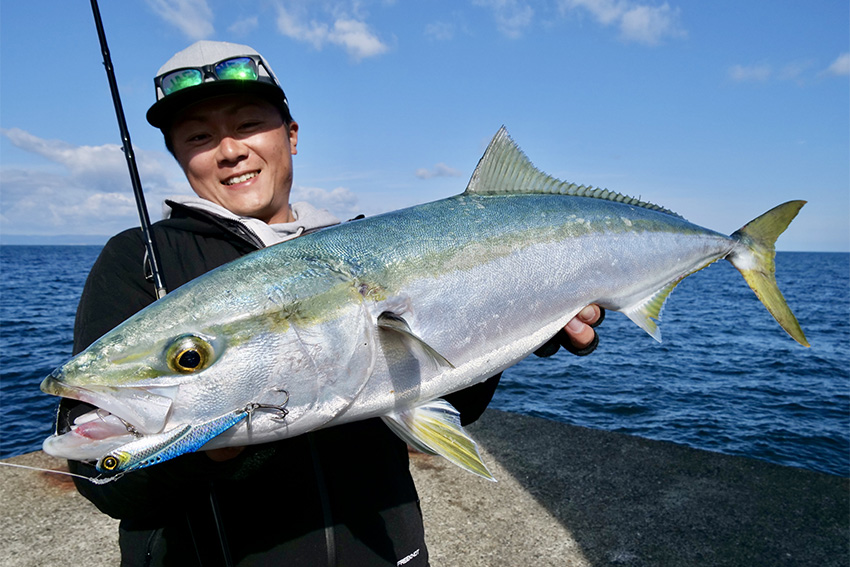With some 5,000 different products at its disposal, the globally renowned company is perfectly poised to take advantage of the booming recreational fishing equipment market both at home and abroad.

By Sasha Lauture and Sean McBride
Hayabusa, a leading manufacturer and distributor of sporting and recreational goods, was founded in 1970. Specializing in fishing equipment, the company is located in Miki city, which is regarded as one of the leading hardware production regions in Japan, with a blacksmithing history dating back some 1,500 years.
With its stunning scenery and access to mountains and the sea, Japan is perhaps uniquely placed to capitalize on the rapidly expanding recreational fishing equipment market, which is predicted to reach USD 26 billion by 2030.
Hayabusa President Yumi Shida takes up the thread: “We are working to promote recreational fishing both in terms of products and activities. As well as developing convenient products that are easy to use, we are also focusing on creating content that allows people to learn how to fish and how to prepare for fishing.”
The industry may be booming but competition remains fierce, and for Ms. Shida the key to survival is accessibility. “We value monozukuri,” she says. “And we want as many people as possible to enjoy fishing. Our competitive edge lies in our ability to create products that are both simple to use and improve fishing results.”
This desire to make fishing a recreational activity for all has, over the years, led to an inventory of some 5,000 different products, the shipping and storage of which is facilitated by ‘AutoStore,’ one of the largest automated warehousing systems in Japan. Ms. Shida again: “Our 'AutoStore' system uses robots to prepare shipments for delivery around the world; the system not only enables us to ship quickly and accurately, but also to preserve items in a storage-safe environment.”

Exterior view of Vietnam Plant
Of the various jigs and hooks available for purchase, the company is particularly proud of its Makimaki JACK EYE series, a metal jig lure that changes color underwater and allows anglers to target a variety of fish by simply throwing and reeling. Elsewhere, the Sabiki rig, a signature product developed in the early days of the company by Ms. Shida’s father, is growing in popularity worldwide.
In addition to its fishing tackle business, the firm also sells apparel for fishing under the brand name Free Knot. Here, innovation is key. “In recent years,” Ms. Shida explains, “we have been focusing on the development of clothing using optical fibers that allow people to enjoy fishing and outdoor activities even in the harsh cold of winter. The material reflects emitted infrared rays to generate heat, and its biggest advantage is that heat is generated without requiring movement.”
This is a clear example of how the company’s experience in the fishing business has created potentially lucrative opportunities elsewhere.
With existing production plants in Vietnam, China and Myanmar, meanwhile, international expansion is clearly on the agenda. “We have been strengthening the organization of our overseas sales department for several years,” Ms. Shida confirms, “and we are striving to increase the ratio of overseas sales.”
The company is currently in the process of gathering information and conducting local product tests in cooperation with overseas distributors, to match the know-how it has cultivated domestically with the fishing conditions in each country. Asia and America are among Hayabusa’s key targets at present.
However, despite the shrinking domestic market, exacerbated by Japan’s well-documented demographic shift, Ms. Shida also maintains that there are opportunities to increase sales at home: “We believe it is important to develop our business in a well-balanced manner, without being overly dependent on either domestic or overseas markets.”
If a commitment to innovation and accessibility is vital for survival, then the company also has an additional ace up its sleeve, in the form of its female president, Ms. Shida herself. Fishing remains a predominantly male pursuit in Japan, but Ms. Shida is keen to change that: “I believe my mission is to spread the joy of fishing to as many women as possible. Currently, we have a women’s fishing team, and we are communicating the joy of fishing from a woman’s point of view through blogs and other media.”
It is a strategy that may just secure the firm’s competitive edge in the years to come.
0 COMMENTS